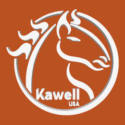Here are some additional tips for novice farriers from experienced hoof-care professionals.
- Start building your inventory early. “You have to understand the proper tools you’ll need for the job and what kind of shoes you’re most likely to need so you can do the job for your clients,” says California farrier Blake Brown. “You don’t need to have boxes and boxes of shoes. You will mostly need 0s, 1s and 2s. You can get buy with just a couple of pairs of 3s or double 0s.”
- Build a team of experts you can rely on. “One of the great things about shoeing today is the amount of information and resources people can draw on,” says Mike Wildenstein of Kentucky and New York. “Develop relationships with other farriers, veterinarians, horse trainers and people in the farrier supply industry.” Wildenstein says these are people who can help you in tough spots.”
- Don’t let your skills get rusty. Indiana farrierTroy Price thinks it’s not only important to find someone to ride along with, it’s important to do so right away. “If you don’t use your skills right away, they will start to drift away,” he warns. “Then, when you do get some calls, you may not feel as confident as you should in your abilities.”
- Develop some self-marketing skills. “There are some very good farriers out there that don’t have many clients,” notes Washington farrier Jeff Engler. “Some of us aren’t at ease with self-promotion, but it’s an important part of running a business. Consider taking some courses that will help you in that area.”
- Heat saves time and spares the body. North Carolina shoerSteve Prescott says shaping hot shoes not only lets you get a more precise fit and shape shoes more quickly, it saves wear and tear on elbows, wrists and knees. He says when he first started shoeing, he didn’t have those skills and banged away on cold metal. “When I learned that fire was my friend, it was an eye opener,” he says.
- Learn to say no. “So often, we are so eager to become a farrier, make a living and support ourselves and our families that we put ourselves in danger,” says Jeff Ridley. “We work in poor conditions, without good lighting and on dangerous or unruly horses. Always remember that it just takes one horse to hurt you badly enough that you never work again.”






